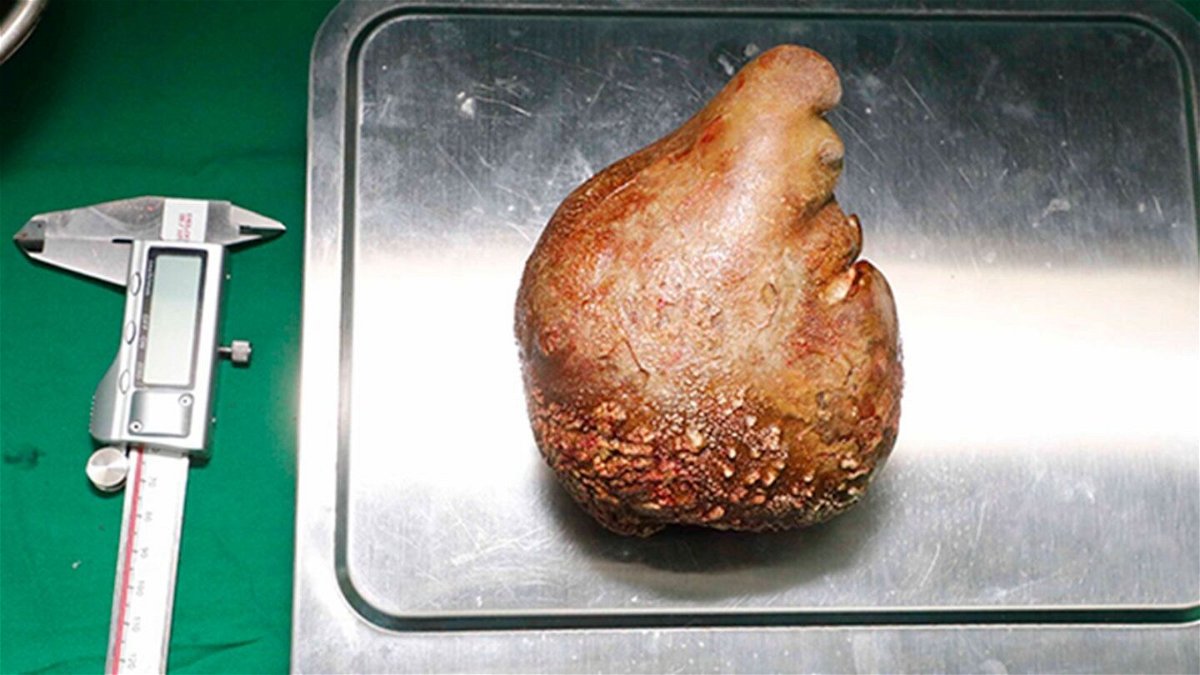World’s largest kidney stone removed – and it’s the size of a grapefruit

The world's largest kidney stone on display in Sri Lanka.
By Tara Subramaniam and Duarte Mendonca, CNN
(CNN) — The world’s largest kidney stone has been removed from a patient in Sri Lanka – and it’s about the size of a grapefuit, as long as a banana and as heavy as four hamsters.
At 13.372 centimeters (5.26 inches) long and weighing 801 grams (1.76 lbs) the kidney stone broke two world records when it was removed by Sri Lankan Army doctors on June 1.
Previously the records were 13 centimeters for length, set in India in 2004, and 620 grams for weight, set in Pakistan in 2008, according to Guinness World Records.
Guinness World Records has confirmed that both records have been broken by the Sri Lankan stone, removed at the Colombo Army Hospital.
Kidney stones consist of solid pieces of material that crystallize in the kidney, ureters or bladder due to genetic and environmental factors.
They are relatively common, affecting around 10% of people at some point in their lives, and some studies suggest they may be becoming even more common.
Most types can be prevented by staying hydrated and reducing sodium intake. According to the Mayo Clinic, drinking as much as 2 to 3 quarts (1.89 to 2.8 liters) of water per day can help remove small stones – less than 3 millimeters (0.11 inches) in diameter – by flushing out the urinary system.
However, the process is notoriously painful.
Stones above 3 millimeters in diameter often require more extensive treatment such as surgery to remove them. Such treatments include using sound waves to break the stones or surgery through a small incision in the lower back.
A 2018 study suggested that the prevalence of kidney stones is increasing among both men and women in the United States.
In order to confirm a diagnosis of kidney stones, physicians may use imaging techniques such as ultrasound or computed tomography (CT) scans. An increase in the overall use of CT scans over the past 30 years – which are more likely to pick up the stones – may be partially responsible for the increased rate of kidney stone diagnoses, experts say.
The-CNN-Wire
™ & © 2023 Cable News Network, Inc., a Warner Bros. Discovery Company. All rights reserved.
